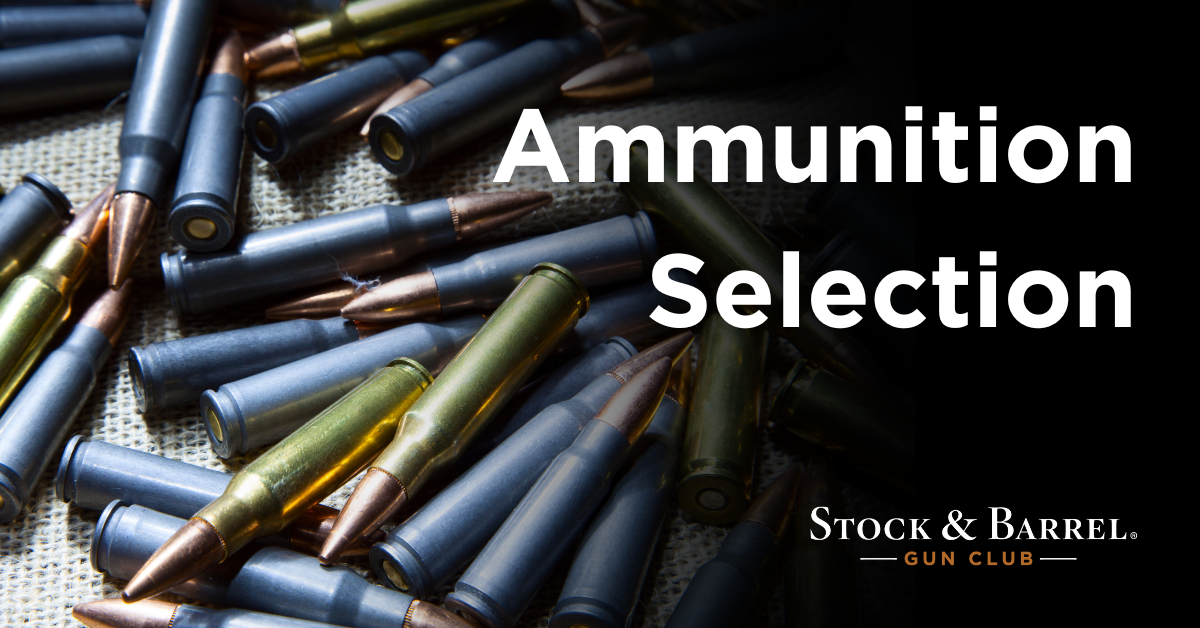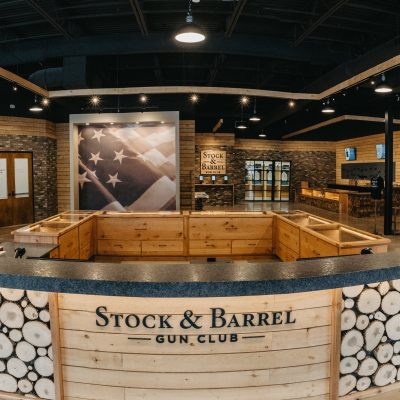It would probably be impossible to count the number of places that exist on the internet dedicated to “the best gun” or “how to choose a gun”. There are, unfortunately, far fewer outlets taking the time to educate consumers on the nuances of ammunition selection. The unfortunate irony is that, ultimately, the ammunition you load into your firearm will have a far greater impact (pun intended) on your intended application than the firearm itself. For the purposes of this article, we will focus primarily on different types of pistol ammunition, with some segue into rifle ammunition where overlap exists. What you intend to use your firearm for—competition, self-defense, or hunting, should be the number one deciding factor on what type of ammunition you choose to use.
JACKETED BULLETS
This class of ammunition is the fundamental building block of all training, practice, and recreational shooting. It is also the easiest to purchase in bulk quantities (500 rounds or more) for these purposes. In the early days of cartridge ammunition—where the projectile, metal case, powder, and primer are all pre-assembled—lead bullets reigned supreme. Lead’s low cost, low smelting temperature, and malleability made it the easiest material from which to form all manner of ballistic projectiles, from musket balls to cannon balls. As firearms progressed from muskets to cap-and-ball, to the current style of metallic cartridges, raw lead projectiles carried over, unmodified until the late 1800s, when European bullet makers first implemented the concept of encasing the lead projectile in copper shell, or jacket.
The standard of copper-jacketed bullets remains today, with only one major difference between a “full metal jacket” and a “total metal jacket”. Traditional FMJ bullets leave a small amount of bare lead exposed at the base of the bullet, where TMJs close this gap and completely seal the lead inside a copper sheath. In recent years, there has been an advent of polymer-jacketed ammunition. Sometimes referred to as TPJ (Total Polymer Jacket), the concept and reasoning behind polymer jackets are the same as copper, but intended to deliver a lower-cost bullet for less expensive training or recreational shooting. These rounds are also popular in pistol competition, where target ranges are short and round-counts are high.
JACKETED SOFT POINTS
Jacketed Soft Point (JSP) ammunition is a style of bullet where the copper jacket is applied to the body of the bullet, but the tip is left as exposed lead. This was one of the first methods used to create an expanding bullet for hunting and self-defense. While you still get the aerodynamic stability and cleaner-shooting jacketed round, the soft lead point will deform on impact, leaving a wound channel larger than the diameter of the bullet itself. This style of projectile has fallen out of favor for self-defense use, having been eclipsed by more effective Jacketed Hollow Point bullets. But JSP rifle ammunition can still be found for hunting purposes.
JACKETED HOLLOW POINTS
Jacketed Hollow Point (JHP) is the current gold standard for handgun ammo intended for self-defense. As the name implies, this style of bullet has a large cone or divot punched into the tip of the bullet, creating a hollow opening at the front end. When these bullets hit a soft target, such as an animal or human body, hydrostatic overpressure forces the front half of the bullet to expand, creating a larger, more effective wound channel. In over-simplified terms, you’re shooting a .45 caliber bullet out of your gun, but hitting your target with a .80 or .90 caliber projectile after expansion.
If you’re shopping for high-end rifle ammunition, you may come across bullets referred to as Open-Tipped Match (OTM). This bullet type is specific to match-grade rifle ammo intended for high precision at long distance. A very small hole is punched into the tip of the bullet, but these rounds are not intended to expand on impact. The purpose of the open tip is to create a small vacuum at the tip of the bullet as it flies through the air. This vacuum effect reduces air friction against the bullet, maximizing range and stability.
BALLISTIC TIPPED BULLETS
The next and newest evolution of JHP ammunition is ballistic- or flex-tipped ammunition. In handguns, this type of bullet is reserved almost exclusively for defensive or duty use. The largest short-coming of traditional hollow point designs is when the bullet has to pass through a soft barrier before hitting its target – think big puffy winter clothing, heavy cloth like denim or canvas, or soft structural barriers like plaster and sheet-rock. These intermediate materials often fill up the hollow cavity, “clogging” the hollow point. When these bullets finally hit their soft, fleshy target, the bullet behaves like a solid jacketed bullet with little to no expansion. In addition to reducing the wounding mechanics, this effect can also create overpenetration, increasing the risk of injuring a bystander if the bullet does not stop inside the intended target. Flex-tip bullets insert a semi-soft polymer “plug” into the hollow point. The end result is that these bullets will pass through clothing and barriers with the ease of a FMJ but, upon impact with soft issue, the polymer plug compresses front-to-back, causing it to expand side-to-side. This lateral pressure causes the bullet to expand just like a JHP, regardless of whatever material it passes through first.
In the context of rifle bullets, polymer-tipped bullets offer a similar result to the aforementioned OTM style bullet, but also creates some expansion on impact with soft tissue. This is especially useful for both hunters and law enforcement officers who carry a rifle or carbine on duty.
A NOTE ABOUT BONDING
Some handgun JHP ammunition is advertised as being “bonded”. You may see this as “bonded bullet” or “bonded JHP” on the packaging or in marketing material. Traditional jackets are applied over top of the lead core of the bullet. Certain intermediate barriers—particularly, auto windshield glass or the sheet metal used in car door panels—have a tendency to shear or peel the jacket off the bullet as it passes through, leaving a fraction of the lead core left to hit the target, with less weight and lower velocity – severely reducing its effectiveness. Bonded jackets are applied through electro-chemical processes, similar to how bargain jewelry is plaited with gold, instead of forged from solid gold.
As opposed to “pasting” a copper jacket around the lead, the lead is treated with a chemical process that changes the molecular structure of the surface layer of lead, morphing it into copper alloy. Since the core material is altered at the atomic level, this style of jacket cannot be torn off by friction when passing through barriers. Bonded ammunition is highly favored by law enforcement, as they are more likely to fire into or through vehicles during felony traffic stops or rolling fugitive apprehension operations.
At the end of the day, factors like cost and availability may also influence what ammunition type you use for various applications, but knowing what’s out there and how it’s intended to be used is vital for getting the most out of your guns – whatever you use them for.
Other Blogs You Will Find Of Interest:
Classes You May Be Interested In:
- Modern Handgun Maintenance in Chanhassen or Eagan
- Clearing Handgun Malfunctions in Chanhassen or Eagan
- Close Quarters Shooting in Chanhassen or Eagan





